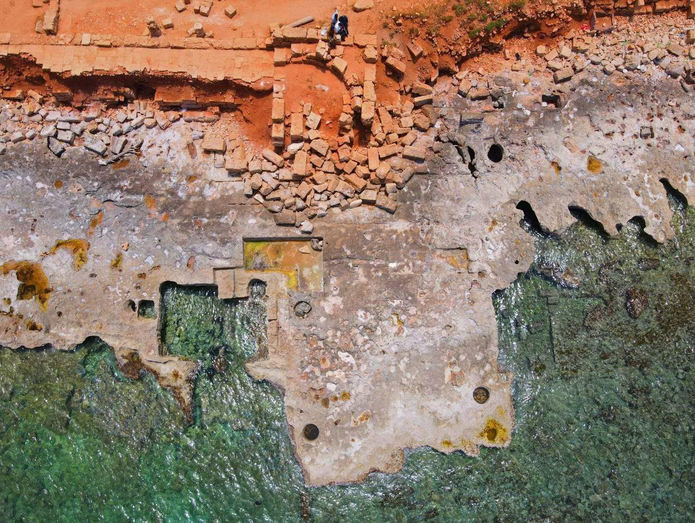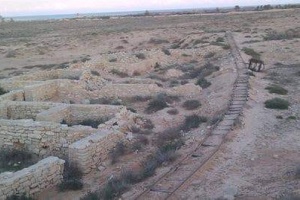The British “The Past” website has revealed that a recent study indicates that the archaeological sites in “Apollonia”, “Ptolemais” and “Tocra” in eastern Libya are at risk of extensive erosion.
The site, with interest in history, antiquities, ancient arts and heritage, added that the recent study sheds light on the rapid increase in coastal erosion rates and floods that threaten the survival of important archaeological remains.
It reported that by combining historical and modern records of Cyrenaica beach, researchers were able to identify and assess coastal erosion patterns near important archaeological sites.
It explained that the team, led by Kieran Westley and Julia Nikolas of Ulster University, compared aerial and satellite images of the shorelines at different time intervals using the Digital Shoreline Analysis System (DSAS), then determined the rates and magnitude of Shoreline movement, where they found that if current rates of erosion continue, the coast at the sites of Apollonia, Ptolemais and Thocra are at risk of extensive erosion.
It further indicated that the "Tocra" is expected to suffer the already eroding proteichisma (curtain wall) from the Hellenistic period to suffer further damage, and that a nearby roofed cistern - originally a subterranean structure that has suffered a loss of beach sediment - will be completely lost.
The website pointed out that at “Apollonia” the paved Roman road is at risk of being completely worn away, and the remains of the Roman bathhouse – especially the entrance to the bath, the frigidarium, the latrines, and the aqueduct – will suffer significant erosion within the next 20 years.
It further reported that outside the “Ptolemais” inland region, only test excavations were conducted along the shoreline and a limited survey of the submerged harbour, as this research revealed that the archaeological remains around the ancient harbour - which include Roman villas with mosaic floors - may disappear within the next two decades.
The study's authors call for urgent documentation of sites along the Cyrenaica coastline in order to preserve information about Libya's past, particularly with regard to its participation in ancient Mediterranean trade networks.



